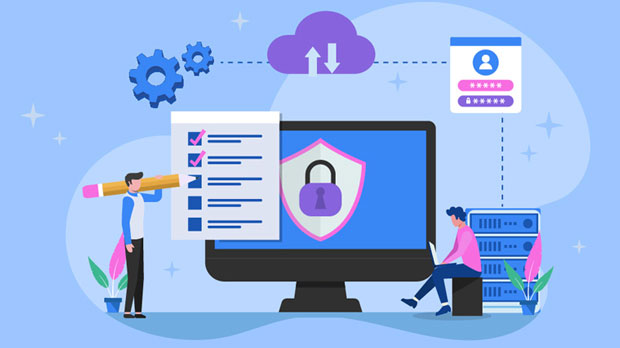Under the SOCKS5 protocol, a comparison of the speeds of PYPROXY and Miga Proxy provides valuable insights for users looking to optimize their internet privacy and security. Both of these proxy services have their own unique features and performance characteristics that can significantly affect users' browsing experiences. This article provides a detailed and comprehensive comparison, focusing on the speed, security, and overall functionality of these two proxy services. It offers a clear understanding of their pros and cons, helping users make an informed decision when choosing between the two. Introduction to sock s5 proxiesSOCKS5 is a versatile proxy protocol that allows users to route their internet traffic through an intermediary server, providing anonymity and security. Unlike HTTP proxies, SOCKS5 works at a lower level in the network stack, allowing it to handle various types of traffic, including peer-to-peer protocols and applications such as torrents. The ability to support both TCP and UDP protocols makes SOCKS5 highly efficient and suitable for a wide range of internet activities.What is Pyproxy?Pyproxy is a popular proxy service that supports the SOCKS5 protocol. It is designed to provide users with high-speed and reliable connections for various online activities. Pyproxy is often used by individuals who prioritize privacy and security while browsing the internet. It is known for its ability to bypass geo-restrictions and provide access to content that might otherwise be unavailable in certain regions. The service boasts a strong network of proxy servers across different countries, allowing users to select the server location that best fits their needs.What is Miga Proxy?Miga Proxy, on the other hand, is another SOCKS5-compliant proxy service that offers similar functionalities to Pyproxy. Miga Proxy is known for its user-friendly interface and ease of setup, making it a popular choice for beginners and advanced users alike. The service is designed to offer fast and stable connections, along with the ability to maintain privacy and security. Miga Proxy is equipped with servers that cater to different regions, enabling users to choose optimal server locations for their internet activities.Speed Comparison Between Pyproxy and Miga ProxyWhen it comes to proxies, speed is one of the most critical factors that users consider. Both Pyproxy and Miga Proxy claim to offer high-speed connections, but their performance can vary depending on several factors, including the location of the user, server load, and the type of online activity being carried out.In general, Pyproxy tends to provide faster speeds due to its optimized network infrastructure and its focus on offering reliable and high-speed proxies for more demanding tasks. Users engaging in activities like online gaming, streaming, or downloading large files often report better performance with Pyproxy. Additionally, Pyproxy provides advanced features such as automatic server selection based on the user's location, which can further optimize connection speeds.Miga Proxy, while still offering decent speeds, may not always match Pyproxy in terms of raw performance. However, Miga Proxy excels in stability, ensuring that users can maintain a reliable connection without frequent drops or interruptions. For users who prioritize consistent performance over maximum speed, Miga Proxy could be a more suitable option.Security Features and Privacy ProtectionBoth Pyproxy and Miga Proxy are designed with privacy and security in mind. SOCKS5 is already a secure protocol, as it allows users to route their traffic through encrypted servers, which helps in masking their IP addresses and protecting sensitive data from potential threats.Pyproxy places a strong emphasis on privacy, offering features such as no-log policies and strong encryption. It also supports DNS leak protection, which ensures that users' real IP addresses are not exposed even when accessing websites that may bypass the proxy server. Additionally, Pyproxy’s advanced security features make it an ideal choice for individuals who are concerned about online surveillance or need an extra layer of security for activities such as torrenting.Miga Proxy also provides robust security features, but it may not offer the same level of customization and advanced encryption as Pyproxy. While Miga Proxy does offer basic encryption and privacy protections, some users may find that Pyproxy’s offerings are more comprehensive, especially when it comes to high-security use cases.Ease of Use and SetupFor users who are not tech-savvy, the ease of setup and user experience can play a significant role in choosing a proxy service. Pyproxy requires some technical knowledge to set up, as it is a more advanced service. However, once configured, Pyproxy offers a streamlined and reliable service with minimal issues. The setup process may involve configuring specific settings for certain applications, such as web browsers or torrent clients.Miga Proxy, on the other hand, is known for its user-friendly interface, making it easy for beginners to set up and use. The service provides simple installation steps, which allow even those with limited technical knowledge to get started quickly. Miga Proxy’s straightforward approach to setup and use makes it an appealing option for users who need a quick solution without delving into complex configurations.Server Locations and AccessibilityThe number and distribution of servers play a crucial role in determining how effective a proxy service is for accessing content in different regions. Pyproxy has a wide range of servers located across multiple countries, giving users access to content from various regions. This feature makes it an excellent choice for users who need to bypass geo-restrictions and access websites that may be blocked in certain countries.Miga Proxy also offers a good selection of servers, although it may not have as extensive a network as Pyproxy. However, Miga Proxy’s servers are still well-distributed, ensuring that users can access content from a variety of regions without significant issues.Pricing and Value for MoneyPricing is an important consideration for most users when selecting a proxy service. Both Pyproxy and Miga Proxy offer different pricing tiers based on the level of service and the number of features provided. Pyproxy tends to be priced slightly higher due to its advanced features, fast speeds, and high level of customization.Miga Proxy offers more affordable plans, which may appeal to users who are looking for a basic proxy service without all the bells and whistles. While Miga Proxy may not have the same advanced features as Pyproxy, it still provides good value for money, especially for those who prioritize ease of use and stable performance over raw speed.In conclusion, both Pyproxy and Miga Proxy offer strong socks5 proxy services, each with its own set of strengths and weaknesses. Pyproxy is ideal for users who prioritize speed, advanced security features, and high levels of customization. It is well-suited for activities that require fast, reliable connections, such as streaming, online gaming, and large downloads. On the other hand, Miga Proxy is better for users seeking ease of use, stability, and a more affordable solution. While its speeds may not match Pyproxy's, it offers excellent reliability and privacy protection for everyday browsing and general online activities.Ultimately, the choice between Pyproxy and Miga Proxy depends on the user’s specific needs and preferences. Those who need high-performance proxies with enhanced security features may find Pyproxy to be the better option. However, for users who are looking for a simple, budget-friendly solution with reliable performance, Miga Proxy remains a solid choice.
Oct 15, 2025



































































